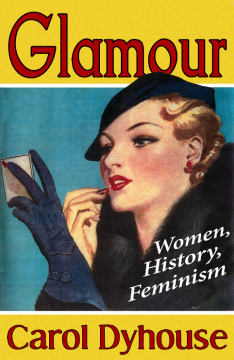
Additional Information
Book Details
Abstract
How do we understand glamour? Has it empowered women or turned them into objects? Once associated with modernity and the cutting edge, is it entirely bound up with nostalgia and tradition?
This unique and fascinating book tells the story of glamour. It explores the changing meanings of the word, its relationship to femininity and fashion, and its place in twentieth century social history. Using a rich variety of sources - from women's magazines and film to social surveys and life histories - Carol Dyhouse examines with wit and insight the history and meaning of costume, cosmetics, perfume and fur.
Dyhouse disentangles some of the arguments surrounding femininity, appearance and power, directly addressing feminist concerns. The book explores historical contexts in which glamour served as an expression of desire in women and an assertion of entitlement to the pleasures of affluence, finally arguing that glamour can't simply be dismissed as oppressive, or as male fantasy, but can carry celebratory meanings for women.
Carol Dyhouse is a Research Professor in History at the University of Sussex. She is the author of Girl Trouble: Panic and Progress in the History of Young Women (Zed Books, 2014).
'Carol Dyhouse has written a study of the history of the conception of glamour in the twentieth century that is sprightly, provocative, and penetrating. She adds greatly to our understanding of a phenomenon that has been central to women's attitudes toward themselves, as they use the products of the beauty industry to both standardize their looks and to express cultural rebellion. This work will be interesting to both scholars and general readers alike.'
Lois Banner, Professor of History and Gender Studies, University of Southern California, and author of 'American Beauty'
'In her survey of changing ideas about 'Glamour' throughout the twentieth century and beyond, Carol Dyhouse has succeeded in fashioning scholarly empirical research into a clear, engaging and enthusiastic account. Rejecting the idea that women are victims of the imperative to glamour, she makes a strong argument for the aspirational aspect of the perennial desire for physical beauty, glamour as a right rather than a prison.'
Elizabeth Wilson, author of 'Adorned in Dreams'
'In her relish for brassy blondes, gutsy flamboyance and tinsel vulgarity, Dyhouse writes like a woman who knows her way around the lipstick counter and the flea market. She shows how a parade in the trappings of glamour expressed aspiration and assertion at odds with mousy, unobtrusive conformity. Glamour was a cynical business, but also a shriek of camp defiance. All fur coat and no knickers. Dyhouse has whipped the stopper from a vintage bottle of 'Evening in Paris' and conjured a vanished world - cheap, a little tarty, but impossible to forget.'
Amanda Vickery, Professor in History, Royal Holloway, University of London, author of 'Behind Closed Doors: At Home in Georgian England' (2009)
'Rigorously researched and persuasively argued, this book represents an important contribution to the social history of fashion and of fabulousness.'
Caroline Weber, author of 'Queen of Fashion: What Marie Antoinette Wore to the Revolution'
'Riveting - from perfume to sexual politics and the precise definition of "It", Dyhouse gives us an entertaining and innovative analysis of a topic that, while hitherto underexplored, has a huge impact on all our lives.'
Sarah Gristwood, author of 'Fabulous Frocks' (2008)
Table of Contents
| Section Title | Page | Action | Price |
|---|---|---|---|
| List of illustrations\r | vi | ||
| Acknowledgements | viii | ||
| Introduction | 1 | ||
| 1 | The origins of glamour: demi-monde, modernity, ‘It’ | 9 | ||
| 2 | Hollywood glamour | 29 | ||
| Light, glitter, sheen | 30 | ||
| Fur and feathers | 33 | ||
| Slinky shapes and figures | 38 | ||
| Cosmetics | 41 | ||
| Flowers and perfume | 43 | ||
| Attitude | 45 | ||
| 3 | Dreams, desires and spending | 49 | ||
| 4 | Princesses, tarts and cheesecake | 81 | ||
| 5 | Revolutions | 109 | ||
| 6 | Glamazons, grunge and bling | 133 | ||
| 7 | Perspectives and reflections: glamour for all? | 151 | ||
| Notes\r | 169 | ||
| Introduction | 169 | ||
| Chapter 1 | 171 | ||
| Chapter 2 | 175 | ||
| Chapter 3 | 179 | ||
| Chapter 4 | 184 | ||
| Chapter 5 | 190 | ||
| Chapter 6 | 194 | ||
| Chapter 7 | 198 | ||
| Sources and select bibliography | 203 | ||
| Archives and collections | 203 | ||
| Magazines and periodicals | 203 | ||
| Books and articles | 205 | ||
| Index | 223 |
